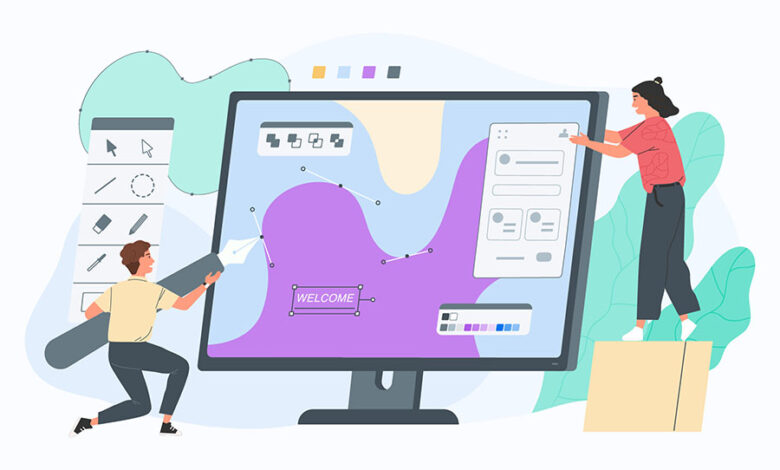Everything You Need To Know About Web Design

Web design refers to the creation of websites displayed on the Internet. This is usually related to the user experience aspects of website development rather than software development. A web design company like Zgraph help promote businesses by creating websites that generate leads. This article will help you understand the basics of web designing, whether you are designing a food website or clothes website, so you will know what to expect and how to choose a perfect web design for your needs.
Responsive Web Design
A responsive web design is a great way to make a website easy to view on different devices. A mobile user’s experience should be the same as a desktop user’s, and responsive designs help achieve this goal. It is also important to remember that mobile users are not always as informed as desktop users, so it is important to ensure that the design is intended e for different screen sizes.
The defining characteristic of responsive web design is that it adapts to different screen sizes. This is achieved through the use of media queries and CSS. The main difference between a responsive and a non-responsive website is that responsive web design responds to the device’s capabilities, making the layout more user-friendly.
HTML
Templates can be an excellent tool for people without HTML and Web design knowledge. Using HTML editors makes building a web page easy and convenient but can lead to losing control or becoming dependent on the program. Web design resources can help both. But remember that a website’s appearance depends on how it’s structured and accessible to people of all levels. Therefore, templates are not a substitute for learning HTML and web design skills.
HTML consists of tags and attributes. Tags are commands written in angle brackets that define how elements display in the web browser. For example, a tag may tell the browser to display an image, bold text, or jump to another web page if the user clicks on it. Attributes are supplementary text that further clarifies the function of a tag. Web browsers read HTML and display only the visible elements of the web page.
Mobile-first
To get the most out of mobile-first web design, consider how many people will view the site on their smartphones. If you are targeting B2B customers, mobile-first web design will be critical to meeting expectations for your business. You can look at the differences between mobile-first web design and responsive web design.
In the United States, 95% of adults aged 18-49 own smartphones, and 67% of U.S. shoppers aged 25-34 bought something via their phones. However, the benefits of mobile-first web design depend on your audience and industry. For some brands, mobile-first web design could be a game changer. Ultimately, the goal is to make your website easy to use and to focus on your audience’s buying habits.
Interaction Design
A good interaction designer should always keep the user’s goals in mind when designing an interface. A user’s goals determine the best ways to present content and solve problems. An interaction designer should understand how people use the web, as their design decisions will affect how they interact with the site. To get this right, the designer must consider the user’s goals and work to achieve them.
The first step in interactive development is to encourage collaboration. Share ideas, requirements, and issues with your team. It would help if you also encouraged conversations that take place regularly. Creative solutions will be born out of these discussions. Although most designers recognize the interactive potential of the web, many still fail to apply these principles in their designs. Instead, they create web pages that are “flat PSDs” without considering the possibilities of using dynamic creative solutions.
CSS
CSS for web design is a two-color HTML document that adds style to web pages. It is used in web design to determine how segments of a webpage are laid out and to change fonts, colors, and layout. With CSS, you can achieve the ultimate aesthetics and organization by automating all formatting within a web document. Its eye-catching range of designs and colors influences users. A web document with excellent CSS will appeal to a broader audience and get better search engine rankings.
In addition to reducing website bandwidth, CSS for web design can also improve search engine optimization. Because CSS is easier to read and understand, it can attract web crawlers, which makes your website more searchable. It also saves time, as CSS documents are stored externally and do not load on each page when a visitor visits the website. The added benefit of CSS for web design is its affordability. Web designers often save time using CSS to design websites because it allows them to apply different styles to more than one page.
For more valuable information visit this website





